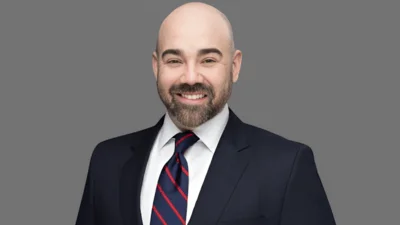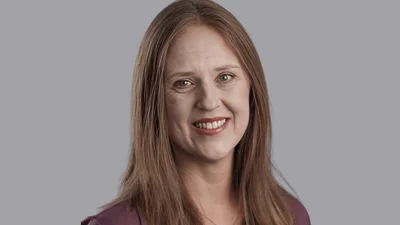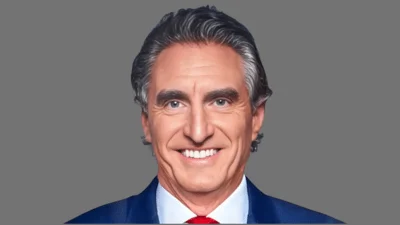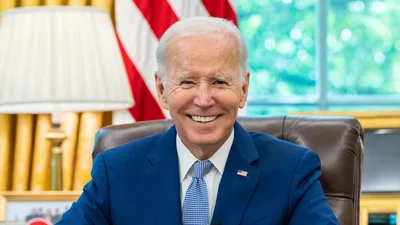CHICAGO ― Today is important to me. I am honored to be here, and I am going to take this opportunity to talk candidly with you about a topic that is deeply important to me.
My office focusses on some significant areas: terrorism, public corruption, financial crimes, cybercrime. But today I am going to focus on one topic: violence in the city of Chicago.
[Slide presentation.]
I wanted to start with those slides because I think we need to starkly define the problem ― to look at it, to understand what is happening, and where, and why.
This is a gang problem, and a gang faction problem.
This is a disparate impact on certain neighborhoods problem.
It’s a fairness problem. A right-and-wrong problem.
This is an economic problem. It’s a reputational problem.
This is a community problem.
A church problem. A parenting problem.
This is a local, state and federal government problem.
This is a law enforcement problem.
And most of all, it a social justice problem.
It is my problem. It is your problem. It is our problem.
In this room we have business leaders, law leaders, and civic leaders. We have thoughtful people, and powerful people. I appreciate you being here today. I want us to talk about this problem: today, tomorrow, every day, every week, until we come to a better place than where we are now.
Changing what you just saw is going to take sustained investment, involvement and commitment from the government and from you -- the business, legal and civic communities. It will take all of us, doing everything we can, and with a long view; this is a marathon not a sprint. We’re talking about a generational change. But we can do it. And we must do it. So we will.
Let me tell you now about what we’re doing at the United States Attorney’s Office.
Our office here has about 150 Assistant U.S. Attorneys. Of those, 20 work in our Civil Division, and the rest are criminal litigators - federal prosecutors. Among our 130 federal prosecutors, for years, we have had the largest group work on issues related to violent crime. Historically, those prosecutors have worked under the auspices of our Narcotics & Gangs section. And over the past couple of decades, we’ve had major, successful prosecutions out of that section ― racketeering cases, narcotics cases, gun cases, criminal conspiracy cases ― against senior leadership within each of those major gangs: the Gangster Disciples, the Latin Kings, the Black P Stones, and the Black Disciples, and others.
As successful as those cases were in dismantling gang leadership, they of course did not represent an end to the violence. At their time, in their place, they helped. But the violence did not stop.
And unfortunately, over the past decade, the gang problem has grown more complex, rather than less. The factioning that I described makes these issues more challenging for law enforcement to grab hold of and tackle. With many gangs, we no longer have the old-school, clearly delineated gang leadership, with corporate hierarchical structure, where we can readily identify the CEO and top brass of the gang, investigate, indict and lock them up - as we did with Larry Hoover, Jeff Fort, Augustin Zambrano and others.
Instead, more and more often, many gangs are factioned, with little central leadership, and the violence is often between factions within the gangs and no longer about protecting the gang enterprise ― narcotics or otherwise ― but instead, more and more, these shootings and killings are for base, indiscriminate and petty reasons ― revenge, disrespect, perceived disrespect sometimes through social media ― kids pulling the trigger over nothing.
And so as our problems change, so must we.
After I started in October, I put my head down and did my due diligence. I spoke with the lawyers in my office, with judges, with defense lawyers, with law enforcement; I read everything I could read on violence in Chicago; I went to court to observe what we were doing, and I ingrained myself in our major investigations and programmatic efforts.
Through that process, I came to a conclusion that was shared by my senior leadership in the office. We decided that while we are very proud of what we have accomplished in the past, now was and is the right time for us to write the words Violent Crime on a piece of paper, draw a circle around them, assign a cadre of talented federal prosecutors, and say to them: your job, your sole mission, is to help the city and the district tamp down on violent crime. And you are empowered to work together, to think strategically, and to use whatever tools you think best suited to accomplish that mission ― the federal narcotics statutes, the gun statutes, racketeering, fraud, money laundering, the federal robbery and extortion statutes, and prevention and reentry tools ― ways of trying on the front end to prevent these kids from shooting at each other.
So that is exactly what we did. In March, I announced internally a restructuring of our Criminal Division and among the changes that went into effect on March 31 was the creation of a new Violent Crimes section. That section has one mission: to help the city and district tamp down on violent crime.
I believe that the standing up of our Violent Crimes section at the U.S. Attorney’s Office comes at an opportune time. The nature, extent and quality of cooperation and collaboration across local, state and federal law enforcement is at an all-time high.
As someone who served as a prosecutor here in the late 1990s and early 20-oughts, and who has served in another city and district, I believe we have a uniquely strong and committed law enforcement community here in Chicago.
Let me give you a few concrete examples:
We have monthly collaborative law enforcement meetings ― attended by the Chicago Police Department, the FBI, DEA, ATF, IRS, HSI and others ― to talk about investigations and prosecutions of the most violent criminals in Chicago. I often attend these meetings myself, and there are senior prosecutors from my office and the Cook County State’s Attorney’s Office there. We gather in a large room, sit around a table, and talk about specific individuals and investigations. Information flows freely between the city, the state and the feds. We leave that room and work collaboratively to make cases on those violent offenders, and then we get back in that room every month to talk about what more we can do. And my office works with Anita Alvarez’s office to make sure we bring the best cases, against the worst offenders, in the right forums.
Another example: Separate and apart from those meetings, for over two years now, we have had in this district a joint Strike Force, called the OCDEFT Strike Force, comprised of topnotch agents and officers from DEA, CPD, FBI, ATF, HSI, USMS, and various Sheriffs’ offices. And officers and agents assigned to this OCDEFT Strike Force all work together, full time, in integrated units, under one roof, with the focused mission of attacking major drug trafficking organizations and gangs at the “choke point" between cartels and street drug distribution, which usually means gangs. My office has a prosecutor embedded in the Strike Force, and CCSAO has a prosecutor embedded in the Strike Force, and many other state and federal prosecutors work cases stemming from the Strike Force. That is remarkable cross pollination and collaboration by law enforcement. And that is what it’s going to take to help move the needle on violence in this city.
A third example: Project Safe Neighborhoods. About a decade ago, law enforcement in Chicago recognized that a disproportionate number of shootings and homicides were concentrating in these six CPD districts I showed in the slide presentation. So we initiated a program, called Project Safe Neighborhoods or “PSN" and created a joint federal, state and local PSN Task Force (different than the OCDEFT Strike Force), the purpose of which is use federal gun statutes to investigate the most violent criminals in those six afflicted districts.
That task force is more than a decade old and going strong. There are committed officers from CPD and ATF, who work with my office and the CCSAO, to investigate and bring those cases. The task force meets monthly. And separate from those meetings every month or so, a senior prosecutor from my office gets together with a senior prosecutor from the CCSAO to go through pending gun cases and make strategic decisions about which office should charge which defendants with gun crimes.
Those are three concrete examples of my overarching point: this truly is a progressed, progressive and committed law enforcement community we have in the city of Chicago. I believe that the new Violent Crimes section in my office will help us continue and build upon those important programs.
Apropos of that, I want to take a few minutes to tell you about another aspect of who we are and what we do to fight violent crime. This area is something that, in my view, not enough people realize or understand that we do at the U.S. Attorney’s Office. When people think of us, they think we carry a stick, we are prosecutors/enforcers. But we also offer a carrot. We try to help and incentivize people not to commit violent crimes.
Thousands of offenders, people convicted of committing acts of violence, are released from state and federal prisons in Illinois every year. When we started Project Safe Neighborhoods over a decade ago, we had data showing that a large number of those returning offenders were coming home to ― reentering ― the same afflicted neighborhoods you just saw in those six Chicago districts. And we had statistics showing that a significant percentage of exoffenders reentering those neighborhoods would commit another violent offense within three years of getting out of prison.
The PSN Task Force wanted to find a path to stop that pattern of violence.
And so we designed monthly “Parolee Forums" or “offender notification meetings," and we have been holding those meetings for over a decade. In fact, our meetings ― parolee forums in Chicago ― have become the model for similar forums now held in major cities across the country.
What do these forums look like? They occur monthly and rotate among the neighborhoods I showed you. Typically, 20-30 recently released parolees moving back into the host neighborhood attend each meeting. The goal of the forums is offer those attendees the chance to make an informed choice.
At the outset, they hear from the local CPD commander, a senior federal prosecutor, a senior Cook County prosecutor, and an ATF agent about what will happen to them if they reoffend. The emphasis is on guns. Often, these are young men coming out of their initial stint in prison and they don’t fully appreciate that because they are now a convicted felon, just by picking up a gun, they would be committing a felony that carries a substantial sanction. We explain that to them, not in a heavy-handed way, but in an honest way. We tell them the truth about the tragic stories we see every day when it comes to felons in possession of firearms.
That’s the heavy part. There’s also a more uplifting part. At the forums, we have social services providers, who are terrific and talk to the attendees about how they can help. For example, City Colleges of Chicago often participates and talks about GED classes and even college course opportunities. Other social services organizations offer help and expertise with things that range from getting a haircut, to how to prepare a resume and find a job. And at some point during the forums, a successful ex-offender addresses the attendees, encouraging them that, while difficult, it is possible to make the right choices and put their lives back on track.
I’ve attended these meetings. They are compelling. They are emotional. And they work.
Early on in the PSN program, we recognized the importance of seeking an impartial, arms-length academic examination. And so we partnered with top academic researchers at the University of Chicago, Andrew Papachristos and Tracy Meares, who are now at Yale but still part of our PSN team here. The analytical work done by Professors Papachristos and Meares has fortified the success of this program. They have found that ex-offenders who participate in the forums are 30 percent less like to commit a new offense than those who don’t. Thirty percent: that is moving the needle.
So our reentry and violence prevention efforts are a real success story and one that we are continuing. In fact, right now, we are expanding those efforts into the juvenile offender arena.
It may not surprise you, given what you’ve seen today, to hear me say that research shows when it comes to predicting violent behavior and social problems later in life, an important inflection point is around 13- or 14-years of age. Kids carrying guns or committing acts of violence at that age are much more likely to later repeat those acts of violence and to end up incarcerated.
So last year, the PSN Task Force applied for federal grant money to launch a new initiative, which we have called our “Youth Outreach Forum." DOJ awarded us that grant, and this month we launched in Chicago. In partnership with the Chicago Police Department, Chicago Public Schools, the Cook County Juvenile Probation Department and other agencies and social service providers, we are taking the success of our parolee forums and applying that model to at-risk youth.
The specific target audience is juvenile probation or parolees who committed gun or violent offenses. And the goal is to provide those kids with long-term intensive mentoring and wraparound services to address their needs and prevent recidivism.
We are initially focused on two CPD districts ― the 7th and 11th, which is Englewood, Garfield Park, and lower Humboldt Park. The forums are designed to educate the kids about law enforcement, to humanize law enforcement, and to give the kids options and incentives to reassimilate into school and connect with community organizations and activities. Alternatives to the gang route. We are working also with a not-for-profit organization, Youth Guidance, who will selectively provide intensive mentoring through their program, Becoming a Man (BAM).
I am proud that we in Chicago are once again at the cutting edge, leading these efforts related to violence prevention. I believe these initiatives are deeply important to our long-term success in fighting violent crime, and I am committed to continuing them as long as it takes to help those unfairly afflicted neighborhoods.
I hope that gives you some sense as to who we are and what we are doing at the U.S. Attorney’s Office when it comes to violent crime in Chicago. We are and will be vigorous in investigating and prosecuting the most violent criminals in Chicago. But we cannot arrest our way out of the gang problem. From a law-enforcement perspective, that’s why I think it’s so important that we continue our violence prevention and parolee reentry efforts. We have to attack this problem at its roots. I don’t want to prosecute violent offenders if instead we can stop them from taking that act of violence in the first instance.
I am deeply honored to get to work with the state, CPD leadership, and leadership from the federal agencies. I believe we have a passionate and like-minded group, committed to taking a comprehensive approach to tamp down on violence. We are working hard, we are working thoughtfully, and we are working together. And we are all in this for the long haul.
That said, law enforcement is a piece of the puzzle but only a piece. And so now I’m at the point in my remarks when I turn to you, and I make an ask. I ask each of you to think about this problem, and how you can own it. You, your company, your law firm, your community organization, your church, your neighborhood.
[Resume slide presentation.]
These are not war zones. They are not separate and discrete from our city. They are our city. They are our neighborhoods with wonderful, law-abiding, decent Chicagoans; citizens, colleagues, neighbors who, like you and me, deserve to feel safe and to be safe at in the neighborhood they call home.
That’s my problem, and it’s your problem. It belongs to all of us, as any social justice issue does. The challenges before us are daunting but they are finite. We can work together to make change real. We have to. Kids are dying. Let’s get to work.
I appreciate you being here with me today. I’m happy to take any questions.
Source: U.S. Department of Justice, Office of the United States Attorneys







